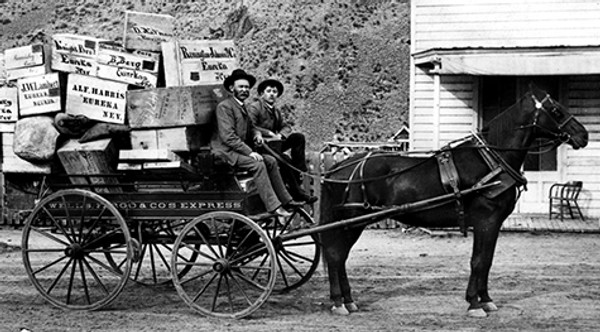History of the Express Wagon
Posted by HISTORY on Apr 19th 2021
The Dictionary of Horse Drawn Vehicles compiled by D. J. M. Smith defines the EXPRESS WAGON as a "Light-weight delivery wagon, having raves or flare-boards above the wheels to support and protect an overhanging load. Hung on either ordinary sideways elliptical or platform springs, (these wagons were) normally used to carry luggage and parcels to and from railway depots." However, the terms "express wagon" and "delivery wagon" became interchangeable and sometimes referred to many types of horse-drawn vehicles used to transport goods–from grocery items to housewares to railway packages.
"An important mover of city freight was the express or baggage wagon. Closely associated with the railway shipping, they were extensively used for express-company deliveries, railway-baggage movement and large deliveries from business houses." Excerpt from Horse-Drawn Commercial Vehicles edited by Don H. Berkebile.
"Wagon Makers offered every manner of Express Wagon conceivable. Most of these had three springs, one parallel to the axle in front and two on the back axle parallel to the body. The back (of the box) was usually hinged, and released by lifting spring catches. A foot board extended beyond the body in front and often had a metal foot rail. The seat was set on wooden risers without springs, since the body of the vehicle was already sprung. . . Such medium size wagons carried all sorts of parcels and supplies, trunks, baggage and equipment home from the depot, or from the store to the home owner." Excerpt from The Marshall Collection Horse-Drawn Commercial Vehicles by Ken Wheeling.
Builders of express wagons used rave frame boxes for a sturdy construction as well as flare boards for easy transport of cargo. Because these vehicles were primarily used for city driving, most of them had a fifth wheel turning mechanism on the front axle along with lower front wheels that could turn under the box for making tight turns.
